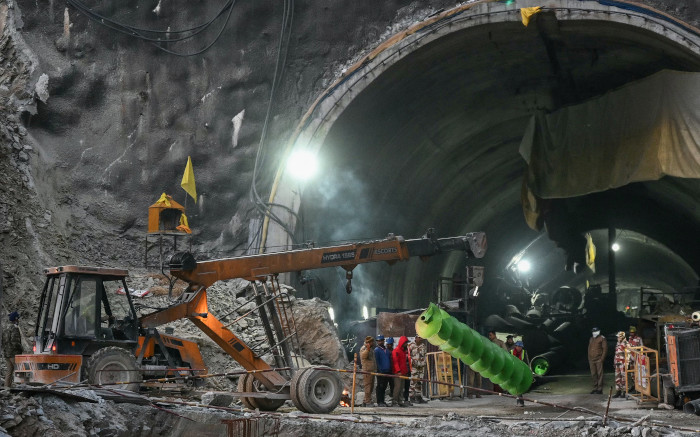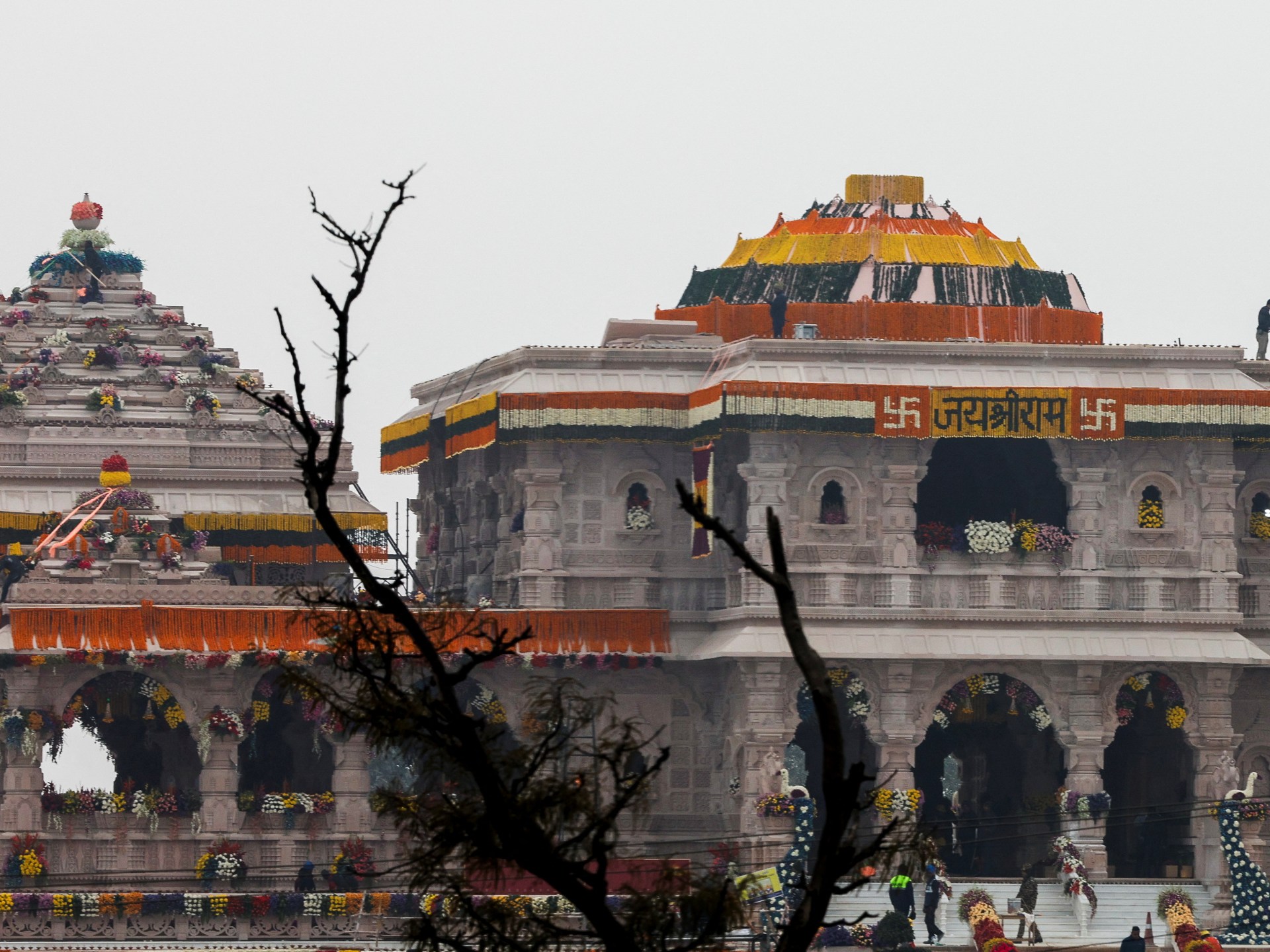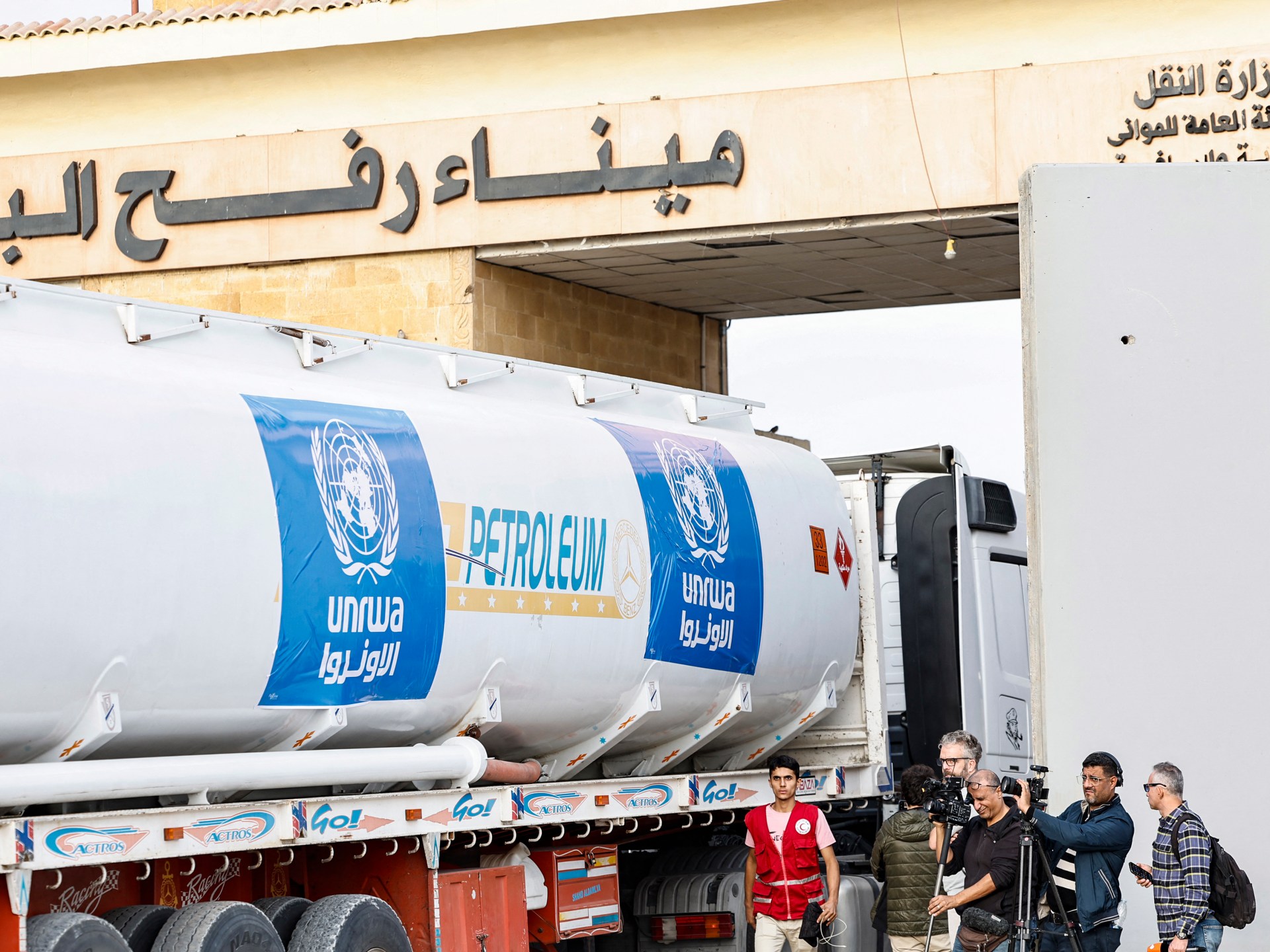
The men received a hero’s welcome after they were pulled on specially wheeled stretchers through 57 meters (187 feet) of steel pipes late Tuesday, the culmination of a marathon engineering operation.
A crane carries part of a drilling machine as the rescue operation enters its final phase for workers trapped in the under-construction Silkyara road tunnel, days after it collapsed in Uttarkashi district of India’s Uttarakhand state on November 22, 2023. Image: Arun SANKAR/AFP
SILKYARA TUNNEL, INDIA – After being trapped for 17 days in a collapsed Himalayan road tunnel they were building, Indian workers described the horror of their ordeal and the hopes and prayers that gave them strength.
“We were very scared, we felt at every moment that death was near,” rescued worker Deepak Kumar told AFP on Wednesday. “We weren’t sure whether our lives would be saved or not.”
The men received a hero’s welcome after they were pulled on specially wheeled stretchers through 57 meters (187 feet) of steel pipes late Tuesday, the culmination of a marathon engineering operation.
They were draped in garlands of orange marigolds and greeted with wild cheers.
“The world is beautiful to us again,” rescued worker Sabah Ahmad told AFP, describing the heartache of hearing his wife’s “worried and hopeless” voice while he was trapped.
“I know it was a difficult moment for the people inside and even more difficult for the families outside,” said Ahmad, who comes from Bihar, one of India’s poorest states.
“But we finally got out, and that’s all that matters.”
His wife Musarrat Jahan, speaking to AFP by phone from Bihar, said “no words” could explain how happy she felt.
“Not only did my husband get a new life, we got a new life too,” she said. “We will never forget it.”
On Wednesday, the workers were flown by helicopter to the hospital for a full examination – and presented with checks from state authorities for $1,200, nearly half a year’s salary – before traveling home.
‘LOST HOPE’
Previous hopes of reaching the men were continually dashed by falling debris and the failure of several drills, and the men spoke of how difficult it was to keep their spirits up.
“It wasn’t easy,” Kumar said. “After three or four days in the collapsed tunnel and the rescue team failing to reach us, our confidence and faith were actually at a low level.”
Most of the men trapped are migrant workers who have left home to find work. They work on the Silkyara Tunnel in the northern state of Uttarakhand, hundreds of kilometers from home, high in the bitterly cold foothills of the Himalayas.
Rescue teams had set up a switchboard to allow families far from the scene of the accident to call.
“I told my family, ‘I am fine and healthy, don’t worry, everything will be fine, we will get out soon,'” Kumar said.
“But as I said those words to them, I sometimes had a strong feeling that I would never see my parents again.”
Guriya Devi, wife of rescued worker Sushil Kumar, told AFP that the family “went through terrible times and at times we lost hope”.
Chamra Oraon, 32, from Jharkhand state, described the horror he felt when he heard a bang and debris falling deep into the tunnel on November 12 – and the horror when the rockfall filled the only way out with tons of debris Rubble blocked.
“I ran for my life but got stuck on the wrong side,” he told the Indian Express newspaper. “When it became clear that we would be there for a long time, we became restless and hungry. But we silently prayed for help.”
Subodh Kumar Verma told AFP that the first 24 hours in the tunnel were the worst, when they feared they would starve if they didn’t run out of air first.
“We had food and air problems there for 24 hours,” Verma said.
But morale was boosted after rescuers managed to connect a thin pipe to them to bring in oxygen.
At first it was just small packets of puffed rice and seeds, but days later the tube was expanded to be able to send real meals of lentils and rice, packed in plastic bottles and sent through the shaft.
“After sending food through pipes, things improved,” Verma said.
But keeping busy while waiting for rescue was difficult as workers played games on their cell phones – which they were able to charge since there was still electricity.
“We delved into Ludo over the phone,” said Oraon. “We talked and got to know each other.”
“KNIGHT IN MINING ARMOR”
Even though they were trapped, the men had plenty of space in the tunnel: the area inside is 8.5 meters high and stretches about two kilometers long.
Arnold Dix, president of the International Tunneling and Underground Space Association, who advised the engineers, said he heard the men were busy “playing cricket” while they waited for rescue.
On Tuesday it finally happened. After a giant auger broke away from metal beams buried in the rubble, a team of miners dug out the final section by hand using the so-called “rat hole” technique in a narrow pipe.
Indian media called the diggers “rock stars.”
“Knights in mining armor,” the Times of India called them. “Ace of Spades.”






Recent Comments